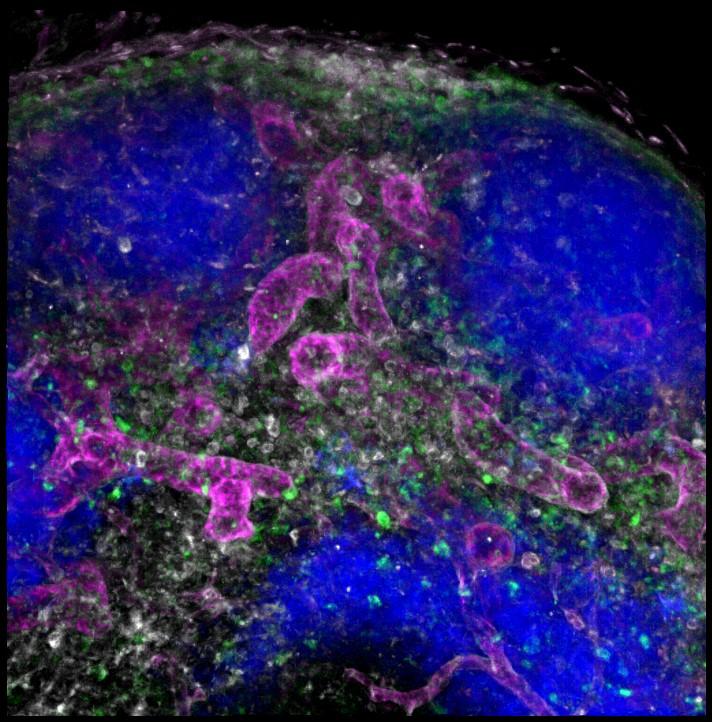
Credit: Ruth Fair-Mäkelä
Many of the immune defence reactions are launched in the lymph nodes. For instance, small, foreign molecules that pass through the skin are directed through lymphatic vessels to the draining lymph node where they are presented to white blood cells. However, the reticular conduits inside the lymph node are so small that large molecules cannot be transported through the system. Therefore, it has been thought that subcutaneously administered antibodies pass through the lymphatic vessels straight into the blood circulation bypassing the lymph nodes entirely.
Researchers from the University of Turku, Finland, have discovered in an experimental model that a new mechanism allows the antibodies to enter the lymph node directly.
Doctoral Candidates Laura Kähäri and Ruth Fair-Mäkelä as well as Adjunct Professor Kaisa Auvinen from the research group of Professor Marko Salmi discovered that antibodies pass through lymphatic endothelial cells covering the surface of the lymph node via a previously unknown mechanism.
– It was a surprise to discover subcutaneously administered antibodies in the parenchyma of the draining lymph node. The delivery of the antibody was extremely efficient. It was transported from the skin into the lymph node in just a few seconds. When using a small dose, the antibody was found only in the draining lymph node in addition to the site of administration, and nowhere else in the body, says Kähäri.
– It’s exciting that the antibodies are delivered in an intact form to the targeted draining lymph node. By using this new delivery route, we can activate or inhibit inflammation locally, adds Fair-Mäkelä.
Significant Potential for Applications
Antibodies are commonly used in treating inflammatory diseases, cancers and several other illnesses. The medication is often administered to the patient intravenously so that large quantities of the antibody spreads throughout the body via the blood circulation.
The novel discovery can have a far-reaching impact on medicine. In vaccinations, for instance, the immune response is boosted with relatively non-specific adjuvants that trigger the inflammation in the draining lymph node. On the basis of this study, the same effect could be induced by locally administered and well-characterised antibodies.
– Also immunotherapeutic checkpoint inhibitors that have revolutionised cancer treatment could be locally administered in certain cases. When compared with the current administration through the blood circulation, local subcutaneous administration would require only a fraction of the drug amount used at the moment. In addition to the cost benefits, this should eliminate the adverse effects in other parts of the body, Kähäri and Fair-Mäkelä speculate.
Both Kähäri and Fair-Mäkelä will focus their future studies especially on the different potential applications of the discovery.
###
Media Contact
Ruth Fair-Mäkelä
[email protected]
Original Source
https:/
Related Journal Article
http://dx.




